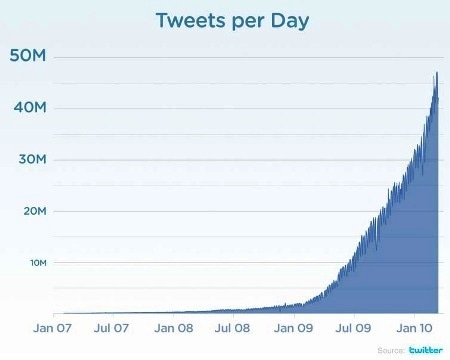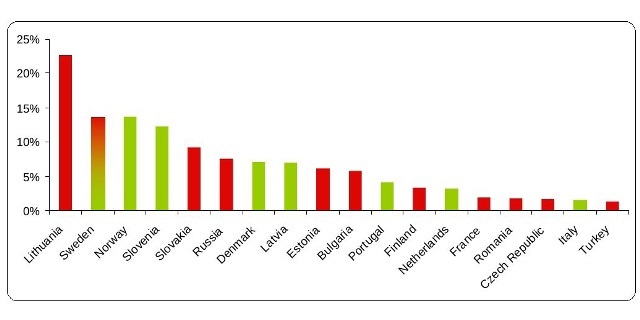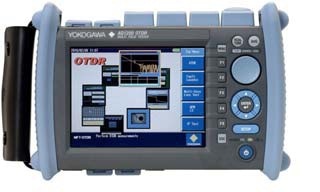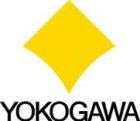Today, internet has become an essential part of society and makes information available in a quick and easy manner. This technology changes the way we communicate or the way we watch movies and television. In fact, in the month of October 2011 alone, about 201.4 billion videos were watched online from work or home locations, and almost 88 billion videos were watched through YouTube.
Internet Traffic
Technology leaders have been concerned over whether the internet is ready to handle unwanted traffic. It has been predicted that an exponential growth of internet traffic would overwhelm the internet infrastructure and would lead to its total collapse.
This phenomenon was dubbed "Exaflood" after the Exabyte of data traffic capacity that would be required. However, it is apparent that these concerns were unfounded and there is little to worry about the Exaflood. With advancements in fiber-optic internet infrastructure, the increase in network capacity is surpassing the growth of worldwide internet traffic.
Fiber to the Home (FTTH)
The availability of a fiberoptic internet connection in homes is one such development. This upgrade means data traffic remains optical down to the consumers address. This improved access network is called "Fiber to the Home" (FTTH) and provides internet access of 100 Mbit/sec.
Back in October 2011, the British operator Hyperoptic introduced a 1Gbit/sec FTTH service, allowing users to download a HD movie in just 40 seconds. In contrast, a standard copper DSL connection with a data speed of 3 Mbit/sec takes 4 hours to download the same HD movie. Thus, the FTTH offers a more reliable network to service providers as it requires less power, equipment and maintenance, and thus lowers cost of ownership.

Figure 1. In 2009, the quantity of tweets grew by 1400% to 35 million tweets per day.

Figure 2. Household Penetration of Fiber to the Home (green) and Fiber to the Building (red) - end 2010.
Advantages of FTTH
With abundant bandwidth, service providers do not have to be concerned about traffic management, data compression and error correction methods. Moreover, attractive services can be provided besides the standard triple-play (voice, data and TV).
Innovative services that are more practical with FTTH comprise cloud computing, home-working, video on demand, remote burglar alarm monitoring, remote control of heating and home lighting etc. FTTH also makes the network homogeneous, so that the customers’ experience remains the same irrespective of the distance of the end-user from the central office or how many subscribers are on the network.
Present Status of FTTH Service
Europe has now almost 3.9 million FTTH subscribers yet this continent lags behind other parts of the world in terms of FTTH penetration. The present rate of new connections, which is 25000 per day, is not sufficient to meet the EU 2020 targets.
The reason is FTTH networks are not uniformly distributed in Europe. To this end, Lithuania holds the top place with 22.6% FTTH coverage followed by Sweden (13.6%) and Norway (13.6%). In total, Russia has the largest number of FTTH coverage with 4.18 million subscribers. Some countries like Turkey, Portugal and Latvia are quickly expanding their FTTH penetration. Surprisingly, countries like Spain, Germany and the UK are not present in the list of top ranking countries.

Figure 3. Fiber to the Home in the Netherlands.
Testing of FTTH Network Quality
The FTTH access network is extremely reliable; however, the installation of optical fibers is a delicate process. The optical signal passes via an optical fiber, whose diameter is less than that of a human hair. At the site where fibers need to be linked together, even small connection errors can result in huge signal losses.
AQ1200 Optical Time Domain Reflectometer

Figure 4. Yokogawa AQ1200 handheld Optical Time Domain Reflectometer.
Yokogawa offers instruments that are exclusively designed to test the quality of connections within an optical network. AQ1200 handheld Optical Time Domain Reflectometer (OTD) is commonly utilized to test an entire series of fiber connections. The instrument sends a laser pulse into a fiber and checks the back-reflections generated by all the connections in the fiber, which is a similar method to RADAR for detecting the location of air planes in the sky.
Conclusion
Based on sustainable development, TTH can contribute to a potential future. This is apparent since all internet access networks will be upgraded to fiber-optic technology. The FTTH Council Europe believes that FTTH is an enabler for economical, social and environmental prosperity.

This information has been sourced, reviewed and adapted from materials provided by Yokogawa.
For more information on this source, please visit Yokogawa.